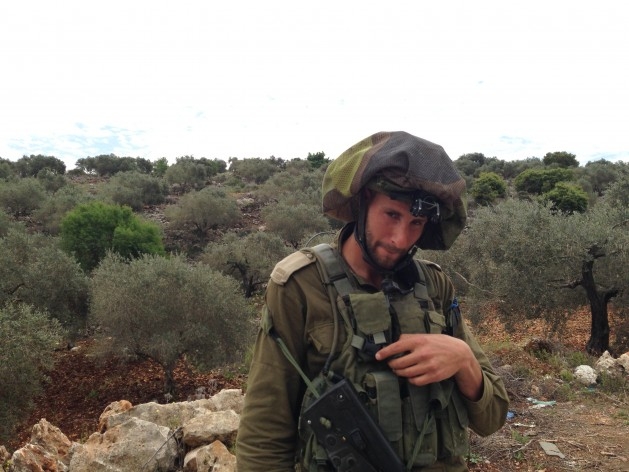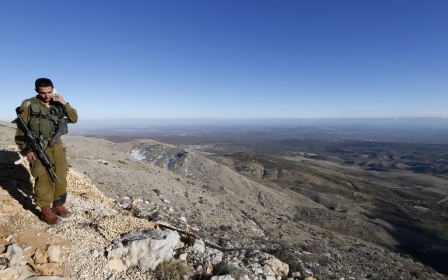Israeli forces target journalists in West Bank: reports

KAFR QADDOUM, West Bank - It is becoming increasingly risky to cover clashes and protests between Israeli security forces and Palestinian protesters in the West Bank as the number of journalists injured, in what appears to be deliberate targeting by Israeli security forces, continues to rise.
During the last 12 months, Israel’s Foreign Press Association (FPA) has issued numerous protests at the manhandling, harassment and shooting of both members of the foreign media and Palestinian journalists.
“The Foreign Press calls on the Israeli border police (a paramilitary unit) to put an immediate end to a wave of attacks on journalists. In just over a week, border police officers have carried out at least four attacks on journalists working for international media organisations, injuring reporters and damaging expensive equipment. These attacks all appear to have been unprovoked,” was one of many statements released by the FPA last year.
The rising trend of Israeli security forces using live ammunition against Palestinian protesters has expanded to include journalists as well.
“A change in policy appears to be the reason for unprecedented aggressive behaviour by the authorities against journalists covering demonstrations in Jerusalem,” read another FPA statement.
The assaults have included shooting rubber-coated metal bullets directly at journalists on a regular basis.
Tear gas canisters, which under Israeli law are meant to be shot from a safe distance in an upward arch so as not to endanger life, have also been shot directly at journalists from close range even when the journalists were out of the line of fire.
Palestinian journalists and cameramen working for foreign agencies and local media appear to be bearing the brunt of these attacks, because assaulting and abusing Palestinians, males in particular, is an integral part of Israel’s occupation of Palestinian land.
A colleague of IPS, a cameraman from Palestine TV, was shot in the leg several months ago with a 0.22 inch calibre bullet fired from a Ruger rifle by an Israeli sniper as he filmed a clash in the northern West Bank village of Kafr Qaddoum.
On a previous occasion, as he left the village, Israeli soldiers pulled his vehicle over, dragged him out and assaulted him.
Another IPS colleague, a cameraman from Reuters, was shot twice in both legs with a metal bullet with a 0.5 mm rubber coating at one Friday protest. The previous week he had been targeted directly with a tear gas canister.
“We are very concerned about the marked increase in the number of Palestinian journalists being deliberately targeted by the Israeli security forces,” said Reporters Without Borders in a statement on the increase in violence by Israeli security forces against Palestinian journalists released last year.
“We reiterate our call to the Israeli authorities, especially the military, to respect the physical integrity of journalists covering demonstrations and we remind them that the United Nations Human Rights Council adopted a resolution on 28 March recognising the importance of media coverage of protests and condemning any attacks or violence against the journalists covering them.”
The situation was even worse during the Gaza war from July to August last year, when 17 Palestinian journalists were killed by the Israel Defence Forces (IDF) even when they were not in the proximity of the fighting.
IPS has witnessed numerous attacks on journalists over the years and has also been harassed by Israeli soldiers when trying to cover clashes.
Last Friday, I was held up for over two hours in the sun by Israeli soldiers as I tried to enter Kafr Qaddoum where major clashes were taking place.
During this time other members of the media, ambulances and other protesters were refused entrance.
With Israeli government press accreditation, an accreditation denied to most Palestinian journalists, I was able to contact the IDF spokesman who coordinated my entrance, but only after several hours of standing in the sun.
I was neither assaulted nor was any of my equipment confiscated from me, another privilege of being white and Western.
Another Palestinian colleague and cameraman came in for very different treatment a month ago when he had had his camera confiscated by an Israeli soldier outside the Jelazon refugee camp, near Ramallah.
When he tried to retrieve his expensive piece of equipment he was warned to back off and knew better than to pursue the issue.
However, when I took the matter up with the commanding officer, the camera was returned to its owner after the officer had taken me aside on a charm offensive while ordering the Palestinian journalists to stand back.
On another occasion, I was accompanying a Palestinian ambulance which was trying to reach Jelazon camp to help Palestinian youths injured during clashes with the IDF.
Several military jeeps blocked the roads leading to the camp and refused to move when asked by the ambulance driver.
After I got out and spoke to the soldiers, showing them my credentials yet again, the jeep moved to the side and allowed the ambulance to continue.
The Israelis still appear to be sensitive to a certain degree to how they are portrayed in the Western media.
This has become apparent to me when covering violent clashes. As soon as it has been established that I am Australian, white and a woman, the aggression of the Israeli soldiers has abated and they have tried to get me on side by asking me if I am alright and warning me to take care.
However, I know that I too could easily fall prey to Israeli ammunition if I am not exceedingly careful so, on this basis, I choose to stay well away from the frontlines of clashes.
New MEE newsletter: Jerusalem Dispatch
Sign up to get the latest insights and analysis on Israel-Palestine, alongside Turkey Unpacked and other MEE newsletters
Middle East Eye delivers independent and unrivalled coverage and analysis of the Middle East, North Africa and beyond. To learn more about republishing this content and the associated fees, please fill out this form. More about MEE can be found here.




